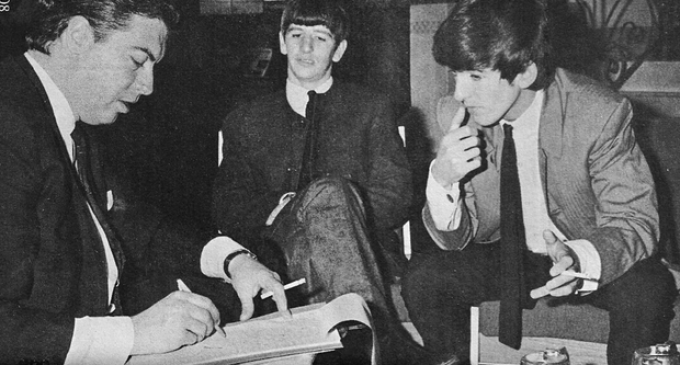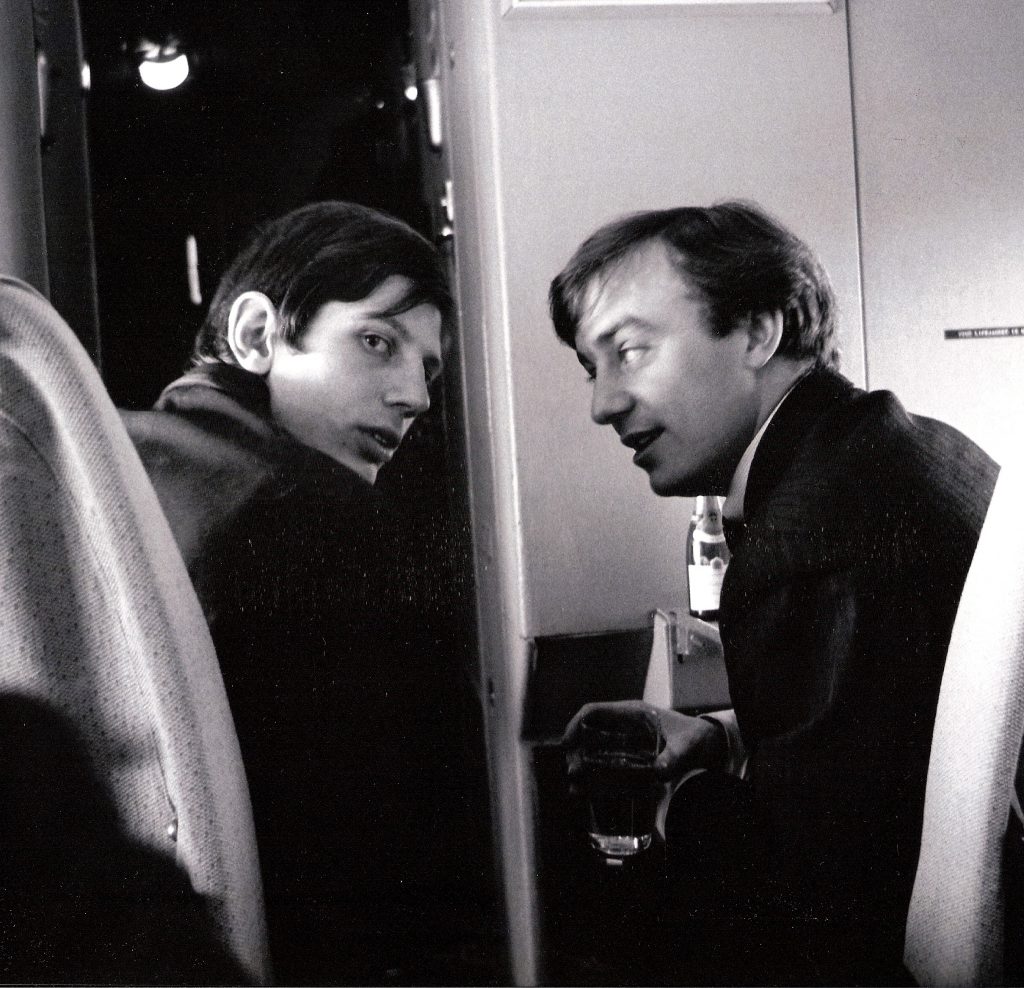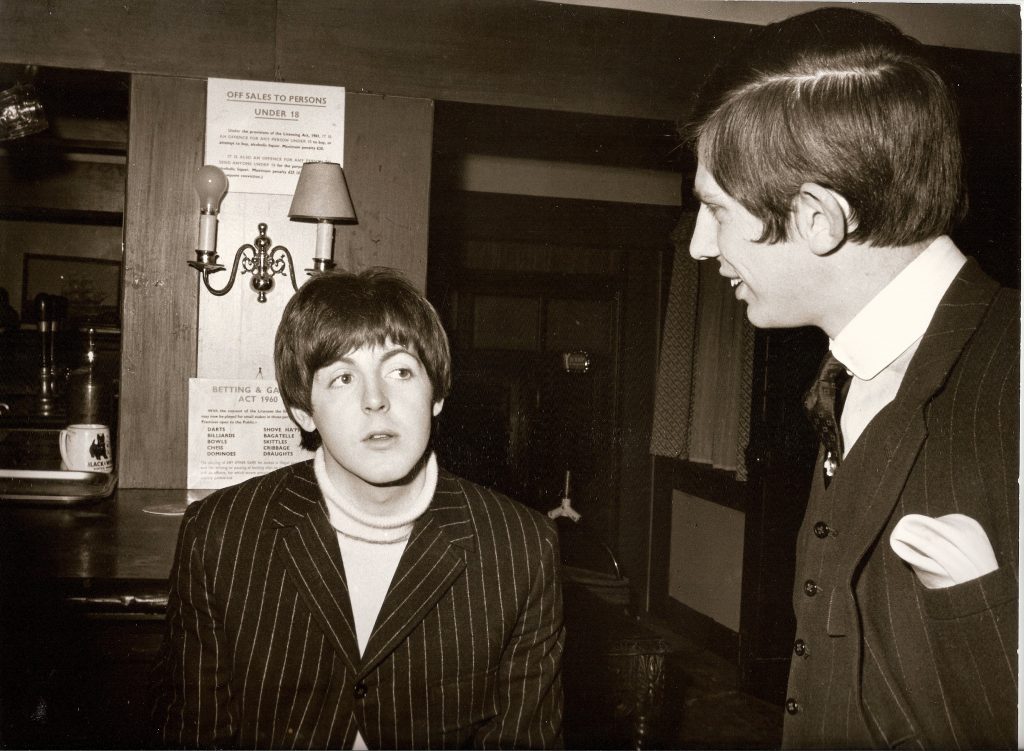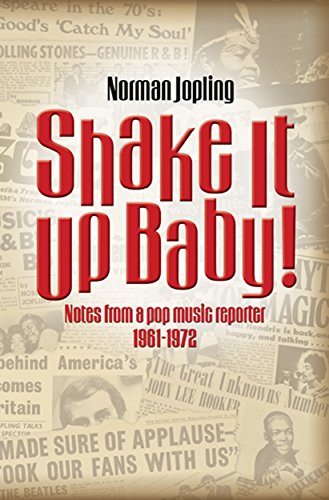Shake It Up Baby

SHAKE IT UP BABY.
by Bill Harry
When Virginia and I moved to London in 1966 it was ostensibly to manage the Four Pennies, although the group did break up for basically personal reasons. In the meantime I had already established an income from writing again. I had a full page column each week in Weekend magazine, columns in the teen publications Marilyn and Valentine and features in the German publication OK.
I already had my own column in Record Mirror, wrote features for Music Now and contributed a weekly column for Music Week. To me, RM was my favourite music publication experience following Mersey Beat and I contributed numerous features and also acted as News Editor. I was writing so much at the time that I used a number of pseudonyms in both RM and Music Now such as Nick Blaine, Brenda Tarry and David Berglas.
Yes, Record Mirror was amazing and Peter Jones was the nicest most supportive editor any journalist could have wished for and I still have fond memories of the days I worked with him. I also enjoyed the company of my fellow journalists including Norman Joplin, Richard Green, Lon Goddard and Val Mabbs.

To me, Norman and the other journalists of RM were not only merely colleagues, but good friends. Just as I had felt part of a community warmly enveloped by the Mersey music scene, so that exhilarating experience was repeated in those heady days of the 60s decade. As I was part of the unique Mersey music scene which was to change popular music irrevocably, I was also deeply involved in the development of the Swinging Sixties London scene.
At over 500 pages, this epic tale of a music journalist travelling through one of the most exciting decades of them all is an astonishing feat of memory, a true musical odyssey. People say “If you remember the Sixties, you weren’t there,” without understanding what that phrase meant. That phrase referred to the fact that a lot of young people were taking drugs. That was a time of purple hearts, marijuana, LSD and even stronger drugs, which meant a lot of folk were out of their minds and have a fractured memory of those times. I never took any drug in my life, not even purple hearts. I did chew a strip of Dexedrine from a Vick inhaler at the Gambier Terrace flat with John and Stuart, but that was about it. Saturday Evening Post journalist Al Aronowitz gave me a farewell present when he left Liverpool for the States and when I opened it, it was a bag of marijuana. I threw it in the bin.
I must admit that it was a time of booze and Terry ‘the Pill’ Slater referred to beer as ‘a pint of reality.’ Our second RM office was De Hems, a pub in Macclesfield Street and there were a variety of after-hours drinking clubs such as the A&R Club and the Cottage.
But back to the book: Over forty years had passed since the events related by Norman and I asked him why did it take such a long time before he had the book published.
He told me: “Well, for a very long time, I didn’t think there would be much interest in the subject matter. I started the book about ten years ago but never wrote full-time as I was always busy with other things (i.e. things to make money). I just felt, instinctively, that I should get it all down as best I could, as not too many of us have had such experiences at such a crucial time for pop music. But I never really expected it to get published, so everything about it – the style, the content, the sequencing, the extracts – was all done purely to please myself, and possibly an imaginary reader, a contemporary who would be very interested in the Sixties music scene and its progression. I didn’t keep diaries, but because the impressions that registered at that particular time were so vivid, much remained in my memory. Having said that, I couldn’t have written it without the bound copies of RM and Music Now which I had hung on to through thick and thin.
“It took me about five years to write and I got rejected by a lot of publishers, big and small, and several agents. The consensus was that music books don’t sell well unless they’re by or about a very big name, or a contemporary star, neither of which I was in the slightest. It only got published by accident after Mark Rye interviewed me for his RockHistory project and I mentioned in passing I’d written all about it. He became the publisher, but funnily enough I had another offer soon after I’d signed with Mark from another small publisher, and then a big publisher expressed interest. But too late by then.”
I noted the title and commented that, generally, certain books need a sub-head which actually gives an indication of the theme of the work. ‘Shake It Up Baby’ on its own, wouldn’t actually direct the book browser onto the essence of the book. ‘Notes From A Pop Music Reporter 1961-1972’ fits the bill.

“Rightly or wrongly, I thought, and still think, it’s a great title, and I was paranoid that someone else would use the title before me because it’s a title that could be affixed to more or less any 60s book…”
Such an important book as this needs the right promotion to reach its target audience. Unfortunately, in Britain the major publishers have been swallowing up the smaller publishers and virtually concentrate on the big names, the established authors, celebrities and political figures. It is far harder for an author or journalist to get a book published in Britain than in the States. Norman has found a publisher who is dedicated to the history of popular music and the reviews have been universally excellent. I asked Norman how things have progressed since his work was published:
“Not being a prolific writer like yourself, the experience of having this one published has been a great novelty for me – I’ve had some tremendous reviews, done a fair amount of radio promo, a couple of PAs, and it’s boosted my somewhat shrivelled ego. Whether it’ll make me any money is a moot point – I just hope that the publisher doesn’t lose out on taking a punt on it, but my non-financial rewards – interesting new experiences, praise from my peers – have made the whole thing very much worthwhile.”

Norman wrote, in part, in the issue dated 4 August 1962: “Is the Liverpool area the rockingest part of the great British Isles? A publication, ‘Mersey Beat’, just arrived, makes me think this is the case.
“’Mersey Beat’ is designed for beat groups, artists and singers. And they are in apparently great demand….but the supply is there too.
“For example, groups mentioned include The Tremors, Fabulous Fourtones, the Deltas, the Skyliners, the Tremolos, Rock Shaw & the Dolphins, Ken Tracey and the Beat Squad, the Cyclones, the Dakotas, the Zodiacs, the Midnighters, the Four Jays, Group One, the Bluegenes, Gerry and the Pacemakers, the Silhouettes, the Mersey Beats, the Dennisons, the Searchers.
“Names that intrigue are the Beatles (who were billed as big as Bruce Channel in Liverpool), the Spidermen, the Morockans.”
Commenting on the feature in his book, Norman wrote: “The article concluded with still more names of these raffish Liverpool groups… Mersey Beat was edited by Bill Harry, who’d studied art with John Lennon, and was a glimpse into an alternative rock universe. I felt I was getting a sniff of something interesting but wasn’t sure what. Who were these ‘Beatles’ and why, as a supporting act, did they merit billing as big as Bruce Channel, currently touring the UK just off his global chart-topper with the harmonica-drenched ‘Hey Baby’?
“Then I saw a picture of the Beatles and knew immediately that they would be huge. They had something no-one else had…they looked like a cross between art students and modernists. They weren’t trying to look like Elvis Presley – they actually looked hip. That was enough. All the beat groups in London (at least ones making records) and all the pretty-boy and not so pretty-boy singers were still quaffed-up, be-greased or just plain ordinary. It was truly uncanny how stylistically unfashionable and out-of-touch the London pop scene was at that point in time.”
Incidentally, I think some of the names of Mersey groups I listed in an early issue of Mersey Beat were quite quirky and inventive, including Wump & His Werbles, Ahab & His Lot, Al Quentin & the Rock Pounders, Gerry Bach and the Beathovens, Johnny Autumn and the Fall Guys, Pete Picasso and the Rock Sculptors, Ray Satan and the Devils, Rocky Stone and the Pebbles, Rip Van Winkle and the Rip-It-Ups and St Paul and the Angels.
This book is a Norman conquest, an odyssey through a musical decade. If you weren’t around in the Sixties, this book will take you there.
Written by: Bill Harry ©2017. All rights reserved. No unauthorised copying or re-publishing of this material is allowed by law. Please contact the writer for re-print permission.
(Contributor, McCartney Times)



There are no comments at the moment, do you want to add one?
Write a comment